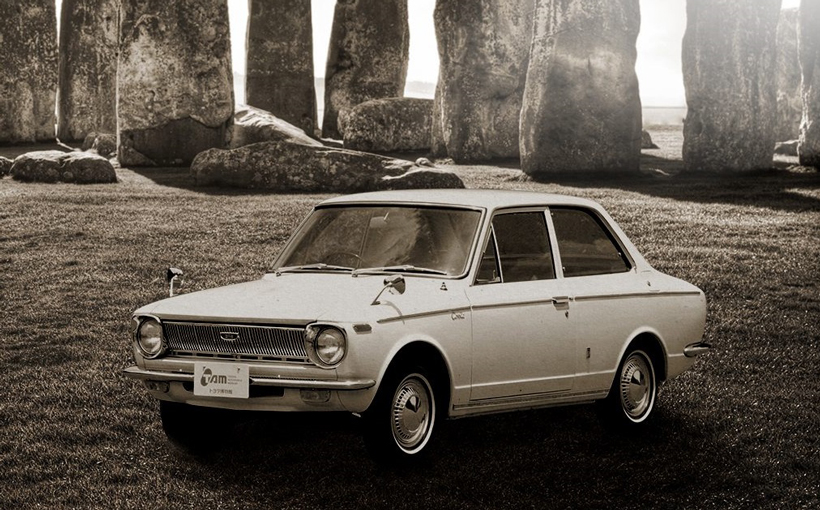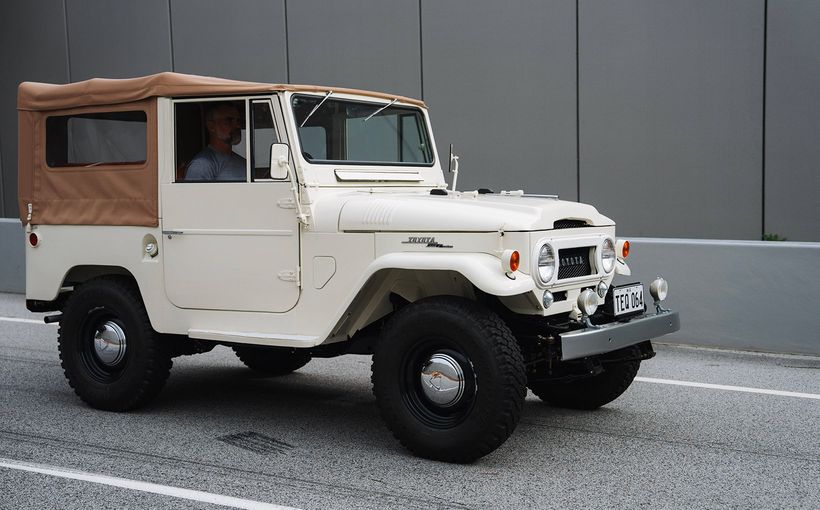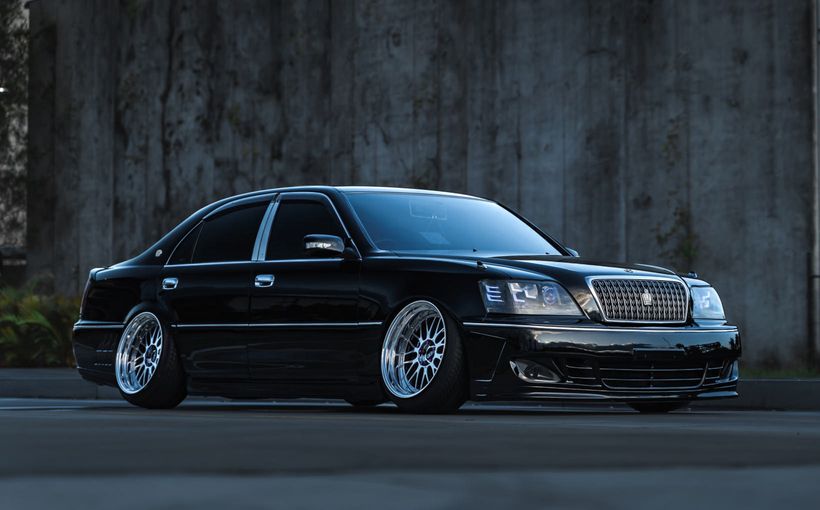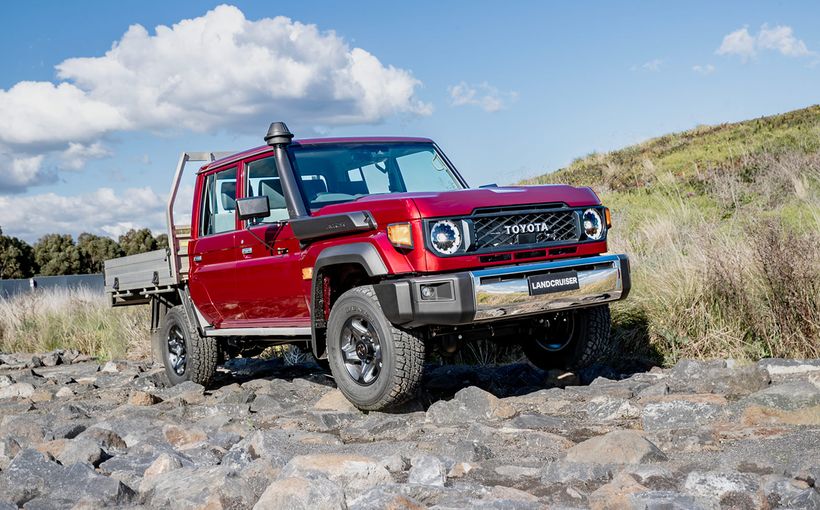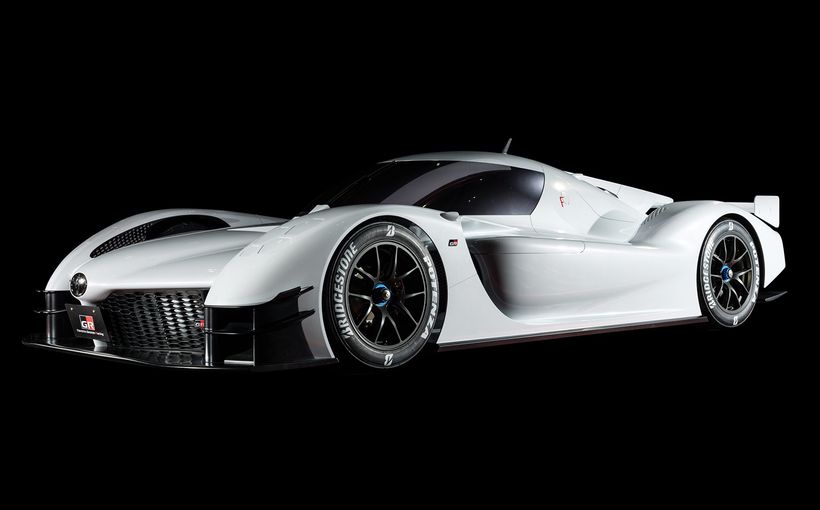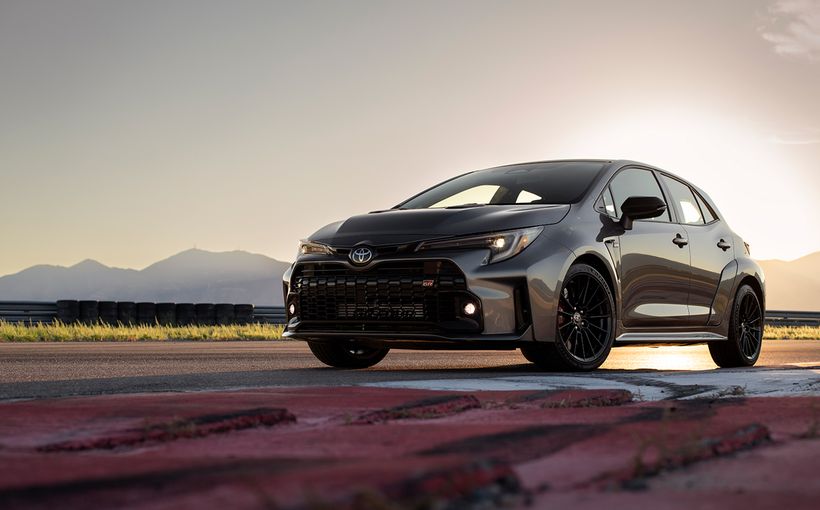Toyota KE10 Corolla:The Car That Made Toyota

The 1967 Toyota Corolla KE10 was one of the four most important Japanese sedans sold in Australia in the 1960s and certainly the most important Japanese car of its time. It was the first small car that seriously advanced that category since the UK debut of the Issigonis Mini-Minor in 1959. The fact that it took a Japanese manufacturer to improve markedly on what the English, Germans and Italians in particular had been doing for decades is in itself a remarkable thing.
The other three most significant Japanese sedans of the swinging sixties are the Toyota Corona (sold in Australia from January 1965), which was the first Japanese car to achieve mass market success here, the Datsun 1600 which redefined the low-cost sports sedan, and the Mazda 1500 which was the first Japanese sedan to possess what might be called an ‘international’ character (its body having been designed by Bertone for an Alfa-Romeo that was never produced!).
The success of first the Corona and then the Corolla is not just about the excellence of Toyotas, it also reflects the rapid development of the Japanese automotive industry and what could be regarded as a changing of the guard in Australian tastes.
Datsun was selling cars in Australia before Toyota and Bluebirds were a reasonably familiar sight when the first Toyota Tiaras hit local streets in 1963. The Bluebird may have looked like a badly straightened-out banana but it had neat proportions and a distinctive character. The Tiara, by contrast was bland and boxy.

Toyota’s presence in Australia was by no means straightforward in those early days. Leslie (later Sir Leslie) Thiess had been bringing Land Cruisers into the country in small numbers from 1958 (22 being sold that year). But his company showed little inclination to import passenger cars. Thiess’s own enthusiasm for the rugged Japanese 4WD was not widely shared and there was still great antagonism towards the Land of the Rising Sun because only 13 years had passed since the end of World War Two. Incidentally, in 1959 the entire Japanese automotive industry produced just 262,184 cars, a total comparable with Australian production!
The infamous ‘Credit Squeeze’ of 1960-61 was partly responsible for the introduction of the Toyota Tiara to the Australian motoring scene. Australian Motor Industries (AMI) was formed in 1958 when the sales of Standard cars plummeted. Management needed a wider range of products, and initially there were high hopes for the flawed Triumph Herald. AMI assembled Mercedes-Benz 220SE and 190D models from January 1959, some Mercedes-Benz trucks and buses, as well as whatever Standard-Triumph UK (who owned about 40 per cent of AMI shares) was prepared to export in completely knocked down packs. In 1960 it also took on assembly of some Ramblers, but that same year the arrival of the Ford Falcon (in the midst of the Credit Squeeze) saw AMI facing bankruptcy. Walter Balchin, the CEO, resigned and Leyland boss, Donald Stokes, sent a Standard-Triumph troubleshooter named Ken Hougham to sort out AMI. It was Hougham who added Toyota to the AMI portfolio.

Ken Hougham was one of those petrolheads the industry desperately needed (and needs perhaps more now than ever!) and was mad about motor racing. Later, he would equip the Triumph 2000 with a hot cylinder head and a set of wire wheels to create the now revered 2000 MD; he thought outside the square. Several AMI cars feature prominently in Bathurst 500-mile races of the 1960s and early 1970s: the Triumph 2000, original Corona and the Corolla were well represented and it is clear that Ken Hougham was one automotive executive who subscribed to the race on Sunday sell on Monday marketing theory.
In 1962 AMI’s share of the market fell to one per cent. The bank threatened to stop credit and the company borrowed £1,000,000 from Custom Credit. During that dark winter, the financier became the conduit through which talks between AMI and Toyota began. Thiess was not interested in selling passenger cars. Here was an opportunity Hougham seized. ‘I knew we had to add to the assembly throughput,’ he said. ‘That was the key to getting us out of a parlous position. I knew Japanese vehicles were over engineered and heavy, but they were also reliable and durable.’
The first Tiara left Port Melbourne in April 1963. By this time AMI had already assembled 20,000 cars of other brands. As for Toyota, its annual production was about the same as Holden’s, so the Japanese industry was still effectively in its infancy. In 1968 that industry produced four million vehicles, half of them cars!
In 1963 AMI’s market share climbed to 1.2 per cent, helped by 901 Toyotas.

Despite Hougham’s praise, Japanese cars weren’t all that great in the early 1960s. As well as the Tiara, AMI also imported a few Toyota Publica 700s. This two-cylinder model took 53 seconds to accelerate to 60 miles per hour which was hazardously slow even in 1963 traffic (the Wright family’s 1950 Armstrong Siddeley taking 22 seconds to reach the same speed!). The problem was that it had been engineered for domestic Japanese consumption. It had been a similar story with the early Crowns which were exported to the US. At sustained 70 mile per hour cruising speeds their engines failed. Heading into the 1960s, Toyota still had a lot to learn about export markets. Australia became the single biggest teacher. There was nothing exciting about the Tiara but it was robust and reliable.
Sales growth was exponential, or maybe better than exponential at first, despite a tariff protection regime that favoured local manufacture over assembly from completely knocked down (CKD) kits, which was the AMI process. A total of 1684 Tiaras were sold in little more than 18 months. But when the ‘shovel-nose’ Corona arrived in January 1965, it propelled AMI to a market share of 3.7 per cent. An amazing 11,792 Toyota passenger vehicles were sold that year, of which about 7500 were Coronas and most of the rest Crowns.

AMI was Toyota’s largest customer and Toyota was far and away AMI’s most successful brand. (By the end of the 1960s it had 6.9 per cent market share.) Despite its strange styling, the Corona was immediately popular and was more responsible than any other vehicle for discrediting Ford Australia boss Bill Bourke’s claim that he never expected to see Japanese cars in RSL carparks. York Motors, NSW distributor of Toyota, launched the 1972 Corona in the Coogee/Randwick RSL Club.
Undoubtedly, the Corolla’s road to spectacular sales success was initially paved by the Corona. But where the four-door model did not especially shine in terms of performance or driveability versus its 1.5-litre rivals, the Corolla was superior to anything in its class. The new small Toyota was not the first Japanese car of its type to be sold here, that honour going to the rival Datsun 1000. But where the Datsun had a kind of fragile Italianate elegance of line, the Corolla looked more purposeful. It also felt more solid and was faster.
The KE10 Corolla was introduced locally in May 1967. By this stage Japanese cars were commonplace and, frankly, most were underwhelming in terms of their abilities. The Corolla was to small cars what the Datsun 1600 would shortly be to small-medium sedans. Both, of course, proceeded to write themselves into the production racing car record books.
Perhaps in this era of high top speeds not legally achievable in most of the world, it’s easy to overlook just what a standout car the KE10 Corolla was. The June 1967 edition of Wheels carried a full road test. That same edition also had a test of the revised (76 brake horsepower, round instruments) Peugeot 404, one of the most esteemed semi-sporting family cars on the market. The 404 took 17.8 seconds to reach 60 miles per hour and 20.1 through the quarter mile. The Corolla’s respective times were 15.4 and 20.2. Its top speed was 84.7 to the Pug’s 87.4. But its overall fuel consumption was 43, while the Peugeot could only manage 28.9. The most remarkable figure of all is the Corolla’s maximum speed in third gear – 71 miles per hour, about the same as the top speed of the original Morris 850 with a ratio remaining…

Its capacity of 1077cc was bigger than the class norm of 1967 and 60 brake horsepower (SAE) was about 25 per cent higher than the expectation of 1.1-litre engines just a few years earlier. My own 1960 Fiat 1100 had 43 bhp and was an excellent performer for its era.
The Corolla was about 25 per cent bigger than a Mini with an overall length of 12 ft 7 inches (compared with 10 feet even), but its overall dimensions were comparable with the Datsun 1000 and Vauxhall Viva. The Wheels tester reckoned it had good room for four adults, a comfortable driving position and neat instrumentation. As for the appearance, the writer became fulsome: ‘The styling of the car has been highly successful in both eye appeal and accommodation. From the rear, the Corolla looks as though it could be the offspring of a Toyota that had married an Alfa Veloce. It has a clean, crisp look in profile that changes to a slight scowl at the front when you look it straight in the eye.’

Re-reading that Wheels report with the benefit of 48 years hindsight, I’m surprised by how modestly the Corolla is praised. But then again how could the writer have known that within the decade the Corolla would be the world’s top-selling car? The magazine also published a comparison between the Hillman Imp, Holden Torana, Datsun 1000 and the Corolla, concluding: ‘Each car shines in a different way. The Hillman wins in performance, Datsun on equipment and finish, Torana offers the most car in size and Corolla is the nicest in overall use.’ These days the Imp is an oddity, the four-cylinder Torana barely celebrated and the Datsun 1000 has slipped below most radars (unlike its 1600 sibling!).
Tatsuo Hasegawa was appointed Corolla Development Leader in 1963. The previous year, when he first came up with the idea, Hasegawa was chief engineer of the Publica. The Publica was to the Japanese market what the Austin Seven was to the British, the Fiat Topolino to the Italian and the Beetle to the German: the first step into four-wheeled motoring for perhaps a majority of customers. Japan’s Ministry of International Trade and Industry issued a proposal for a low-cost car to bring mass motorisation to Japan. The Publica was Toyota’s response to this. Interestingly, the year was 1961 and in 1962 Australia’s Holden chalked up its millionth vehicle (the famous Euroa Gold EJ Premier).
By comparison, the Corolla was to be luxurious, not just in equipment but also in performance and style. In some respects it bore the same relationship to the Publica as the Volkswagen Type Three did to the Beetle.

Hasegawa was a tough marker. He conceded that the Publica ‘probably looked somewhat cheap’. One of his famous quotes is: ‘Not even one failing score is allowed. However, an all-round score of 80 is not acceptable either. If there is not some sort of feature that enables the vehicle to exceed 90 points in some areas, the hearts of the general public cannot be captured.’ Tatsuo Hasegawa wanted a ‘sporty image’ for his Corolla.
That word ‘nicest’ at the end of the Wheels comparison is a signpost pointing in the direction of capturing the hearts of the general public. For many owners, the Corolla was bewitchingly good. A friend owned a teal blue Corolla wagon in the mid to late 1970s, by which time it had done lots of miles. I remember being surprised at how lively it was to drive and how nimble and how much sheer charm it possessed. (I liked the girl, too.) This compact wagon offered a substantial load area without compromising the agility inherent in the KE10. So it was one of those pleasing wagons that felt more like a sedan.

The Corolla was originally to have had a 1.0-litre engine but when Hasegawa heard that Nissan was developing the Datsun Sunny (sold in Australia as the 1000), he took the decision to increase the capacity to 1.1-litres. The Datsun came to market a few months before the Toyota and the advertising trumpeted the extra 100cc. But effectively the Corolla’s performance advantage equated to more than a mere tenth of a litre because the design of its engine was inherently sporting. Where the Corolla could reach 85 miles per hour (and the factory claimed 87), the Datsun was stuck in the high 70s – like most 1.0-litre cars of its time.
Hasegawa had wanted to use a single overhead camshaft but his engineers just didn’t have the experience. So he settled for overhead valves with the camshaft placed as high as possible in the cylinder block and using the shortest pushrods possible. It was also a bold initiative to use MacPhersons struts for the front suspension. Drum brakes, rear semi-elliptics and 12-inch wheels were pretty much the standard small car fare in 1967.

It is important to understand how pivotal the KE10 was to Japanese automobility. To create this new car, Toyota had to build two factories. Test facilities were limited. This was in reality an enormous gamble which paid off better than anyone could probably have predicted. It was Japan’s top-selling car from 1970 until near the end of the twentieth century. Nearly a million were sold in less than four years which gives us a real insight into the exponential growth of the Japanese industry; it took Holden more than thirteen and a half years to make a million Holdens.
The Japanese language does not always translate crisply into English. Corolla means ‘crown of flowers’ and Toyota’s catchphrase was: ‘The most wanted car by the market – presented to the world by bringing together the essence of Toyota’s technology.’
Australia was its first export market with cars not going to the US until March 1968. It was initially offered only as a two-door sedan. A four-door sedan and wagon were added. The new fastback – a very fashionable configuration by 1968, following examples set by cars like the original Mustang and the Volkswagen 1600 Fastback – KE15 Sprinter variant with an even sportier flavour was exported to Australia and the US. The Sprinter was the flagship of the range and the KE15 was the only model to carry the Corolla name on the domestic Japanese market.

The Sprinter added glamour with its steeply raked roofline, which lowered overall height by 35mm. It weighed about the same as its KE10 siblings at about 700kg.
In September 1969 a new 1166cc engine replaced the original unit in all Corollas.
The KE10 Corolla, then, is one of the most important cars of the twentieth century. It was the pivotal vehicle in putting four wheels beneath Japanese families. Not only that, it redefined the conventional small car of the second half of the 1960s, combining the kind of performance and sportiness that had previously been reserved for sports sedans like the Fiat 1500 or Ford Cortina GT. At the time many European small sedans still had column gearshifts and no synchromesh on first gear, so the Corolla’s all-synchromesh gearbox and sweet floorshift were well received. In some respects we can see it as a kind of small Japanese Mustang – certainly a car to be cherished.

Protect your Corolla. Call Shannons Insurance on 13 46 46 to get a quote today.

